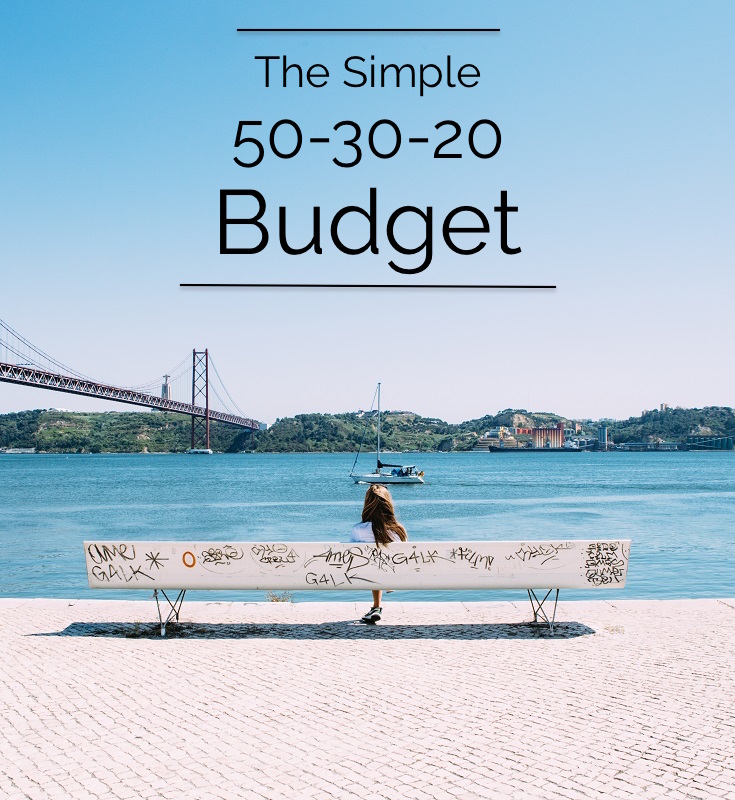The Simple
50-30-20 Budget
I like simple.
Simple is easy. Simple is efficient. Simple means I can spend more time on what matters.
When it comes to budgeting, I want things to be simple. I love personal finance but I don’t want to spend hours budgeting.
The problem with budgeting is that it’s pretty easy to get lost in the weeds. It’s easy to start tracking every transaction and then budget for it. It’s easy to get lost in the nitty gritty of budgeting and forget what the true purpose is, to manage your spending.
If you can manage you spending with a three-line budget then that works, right?!? It serves its purpose. Why go into more detail?
The 50 30 20 budget is the simplest budget there is. You split your income into three categories. Essentials, 50%. Personal, 30% Saving, 20%. That’s it!
Let’s take a closer look at each category starting with the most important first…
Related Posts:
- Creating a Budget? Focus on the Big Stuff
- The Step-By-Step Guide to Creating a Budget
- 5 Hidden Ways to Save Money

Savings: 20%
Twenty percent of your take home income should go towards savings each month.
Where exactly this money goes will depend on your goals. Maybe it’s an emergency fund. Paying down debt. It could be a down payment on a house. Or perhaps its saving for retirement.
Saving 20% is a minimum. This category will likely be higher if you have some aggressive financial goals or large debts to pay off.
Essentials: 50%
Fifty percent of your take home income should go towards essentials. These are all those basic things that you need to survive.
Essentials would be things like rent/mortgage, utilities, groceries and transportation.
Essentials also covers spending that you’re locked into. These are things like car payments, insurance payments, cell phone plans etc. They might not be essential to your survival but because you’re locked into a contract they’re now essential payments you need to make each month.
The exact definition of “essential” will vary from person to person but overall your essentials should not be more than 50% of your take home pay. If its higher than 50% then you need to review your essential expenses to find things to cut from your budget. Start with the things you value least.
Personal: 30%
Personal expenses should be no more than 30% of your take home income. Personal expenses cover things like clothing, restaurants, alcohol, entertainment, gifts, vacations, gym memberships etc.
These are expenses that are somewhat variable from month to month. One month may be higher for entertainment and another month higher for gifts.
What is considered personal is up to you. Some expenses can shift between essential and personal depending on your situation. The key is to keep personal expenses below 30% of your take home pay.
“Simple is easy. Simple is efficient. Simple means I can spend more time on what matters.”

Managing Your Budget:
This is where the simple 50 30 20 budget shines.
Managing your budget is as easy as this, split your paycheck into three chunks each month, 20% savings, 50% essentials and 30% personal. Put this money into different accounts each month so that there is never any confusion which money is for which purpose.
Open a no-fee checking/savings account to help with this. Personally, I like both Tangerine and PCFinancial and have accounts with both.
Use these accounts as ‘virtual envelopes’ to hold you cash. Setup automatic transfers so that each account gets funded automatically when your paycheck arrives. Setup automatic bill pays from each account to make things even easier.
That’s it. The simple 50 30 20 budget. Don’t make budgeting harder than it should be.
Join over 250,000 people reading PlanEasy.ca each year. New blog posts weekly!
Tax planning, benefit optimization, budgeting, family planning, retirement planning and more...
Join over 250,000 people reading PlanEasy.ca each year. New blog posts weekly!
Tax planning, benefit optimization, budgeting, family planning, retirement planning and more...






0 Comments